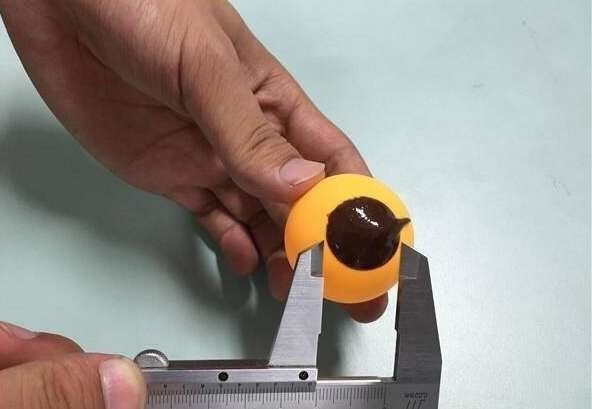Chinese students demystify chocolate's complexities
2017-05-14 15:39 GMT+8

Editor
Song Jingyu
In 2016, about 7.3 million tons of retail chocolate was consumed worldwide, according to Statista. Chocolate is on a sugar high, enjoying continued popularity across the world, but how many people pay attention to its mystifying characteristics?
A research paper written by Chinese college students has received honorable mention by the European Journal of Physics. The article explaining chocolate hysteresis was picked as one of the highlights of 2016 by the international physics education journal.

Ren Ruilong and Lu Qunfeng were the paper's two main authors from a Chengdu university, in southwestern China’s Sichuan Province. /Chengdu Business Daily
Chocolate hysteresis is a phenomenon depicting odd solidification degrees. When chocolate melts at a certain temperature, it often doesn't solidify until it cools to a temperature noticeably lower than the melting point.
What made the students want to research chocolate's mystifying qualities? Well, in 2014 they were participating in a national-level contest in China, when they had difficulty answering a question on chocolate hysteresis. Upon losing points as they were unable to answer the question, two of the undergraduates began to carry out research on the matter. They designed a simple but ingenious model: using common tools including ping pong balls, a constant temperature water box and of course, chocolate.

Chengdu Business Daily
“We used more than 20 boxes of chocolate within a month. The experiment looks easy to carry out but it's actually time-consuming, only generating a group of data for nearly half a day,” Ren Ruilong, one of the authors of the article, told Chengdu Business Daily.
After numerous experiments, their data coincidentally matched the Landau–Devonshire theory, which formulates a general theory of continuous phase transitions. Under the guidance of their teachers, the research paper was first published in the international journal in December 2015. But it was no easy path in determining the answer, showing that perseverance is key, their paper underwent over 40 revisions in 10 months.

Chengdu Business Daily

Chengdu Business Daily
The team's work, by synthesizing experimental research with theoretical analysis, advances the understanding of important industrial material, providing a new method to study chocolate’s features.
Chinese netizens have heaped praise on the college students' scholarly achievement.
“Knowledge is power. People like me using physical strengths to earn a living are shivering,” @yourenyufengerlai commented.
“For the same chocolate, I choose to eat but they use it for experiment… The wide gap between a foodie and a curve wrecker,” said @langmaoliulianding.
Copyright © 2017
